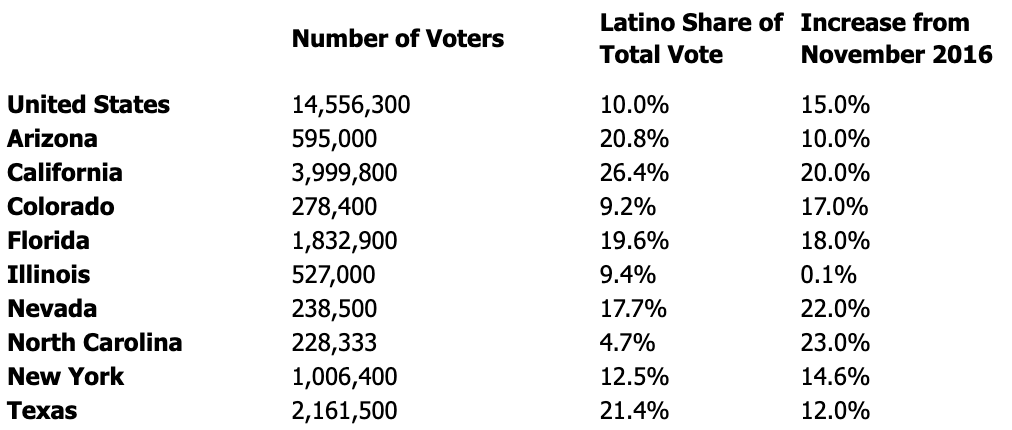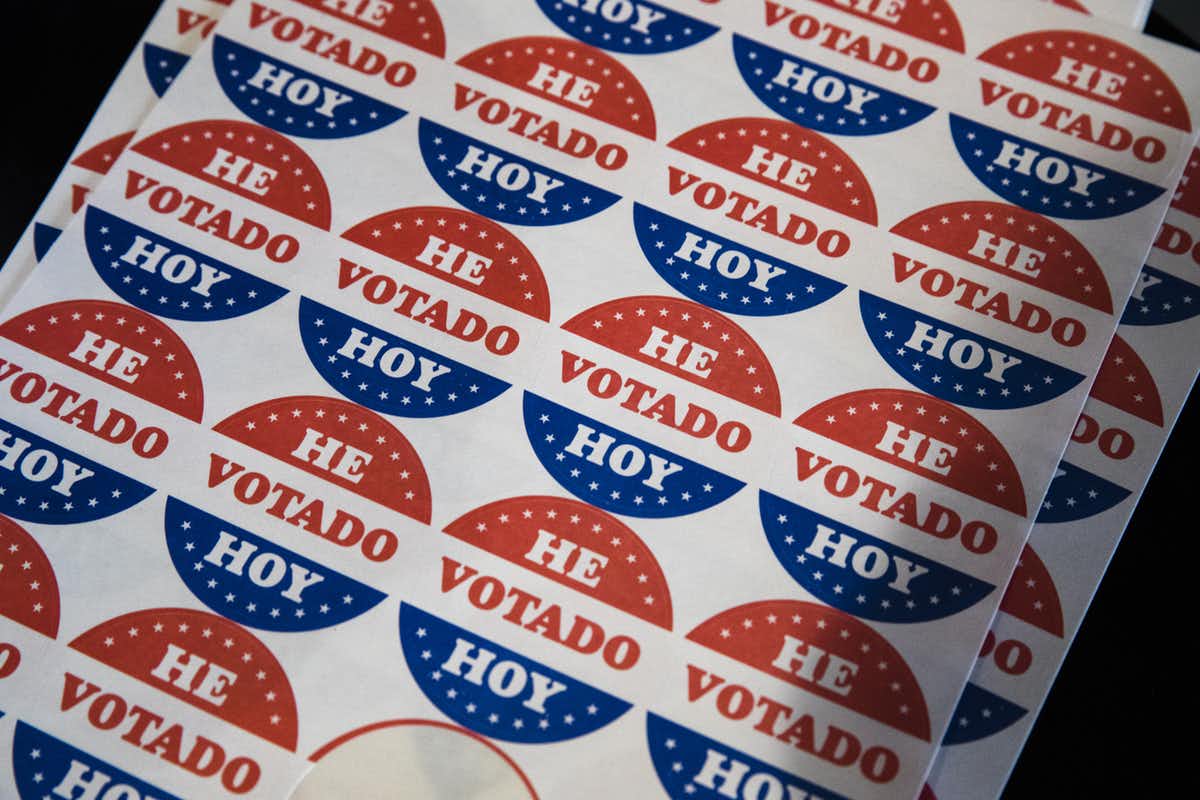A new 2020 Latino Election Handbook released last week by the NALEO Educational Fund predicted that U.S. Latino voter turnout for the upcoming national election will seen increase of 15% when compared to 2016 turnout numbers.
The handbook is also predicting significant increases in several states, including North Carolina (23%), Nevada (22%), California (20%), Florida (18%) and Colorado (17%).


The handbook also predicts that more than 14.5 million U.S. Latino voters will go to the polls in the 2020 election cycle. Another section of the handbooks breaks down historical data of voter turnout and registrations since 2008, both for U.S. Latino voters and non-Latino voters. In 2008, 49.9% of eligible Latinos voted in the presidential election. In 2016, that number was at 47.6%. However, the 2018 midterm elections saw 40.4% eligible Latinos vote, suggesting that 2020 turnout percentage could be higher.


The handbook also used 2018 American Community Survey data, saying that there are now 59.8 million Latinos in the U.S., making it the nation’s second largest population group.


Part of the analysis examined U.S. Latino native-born and naturalized citizens for the nation as a whole, and the states of California, Florida, New York, and Texas, for the last three presidential and midterm elections. There is also additional context on key factors which will affect Latino turnout in November 2020—‚the COVID-19 pandemic and the Administration’s policy stances, as well as the evolving political climate around Latino voter engagement efforts, a release about the handbook noted.
“Getting a full picture of how Latino voters will play a decisive role in the November elections is paramount to understanding the context and progress of our community’s participation in American democracy,”Arturo Vargas, Chief Executive Officer at NALEO Educational Fund, said. “While our projections of Latino turnout are based on past trends in Latino participation, there are many uncertainties that will affect how many Latinos cast ballots in November. We hope this handbook will help deepen our understanding of how turnout may unfold, given all the factors at play in the lead up to the election.”
The complete handbook is below:




[…] part of its 2020 Latino Election Handbook analyzing the Latino community’s participation in this year’s election, the NALEO Educational […]
[…] part of its 2020 Latino Election Handbook analyzing the Latino community’s participation in this year’s election, the NALEO Educational […]